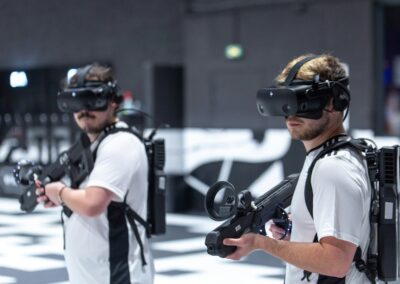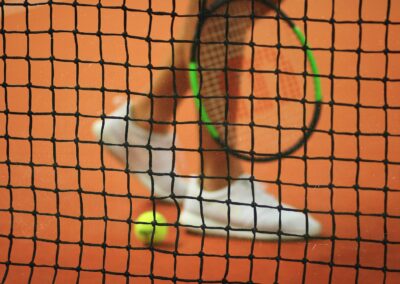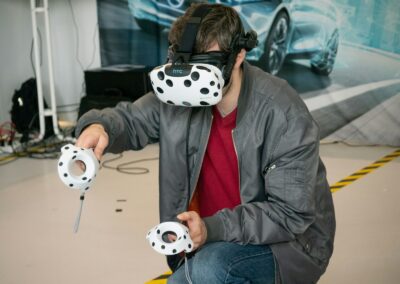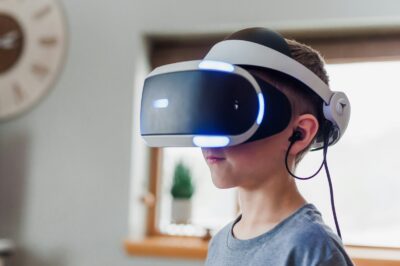Enhancing Training with Real-Time Feedback and Analysis
The Integration of Augmented Reality in Sports Training
The application of augmented reality in sports training is transforming how athletes prepare and perform. By providing real-time feedback and analysis, AR technology enables athletes to enhance their skills more effectively and efficiently. This innovative approach to sports training is gaining traction in regions like Saudi Arabia and the UAE, where sports and technology are both highly valued.
Augmented reality overlays digital information onto the physical environment, allowing athletes to receive instant visual and auditory feedback during training sessions. This immediate feedback helps athletes make quick adjustments to their technique, posture, and movements, leading to better performance. For instance, a golfer in Riyadh can use AR glasses to visualize the optimal swing path and receive instant feedback on their stance and grip, thereby improving their game.
Moreover, AR technology can simulate various game scenarios, enabling athletes to practice under different conditions. In Dubai, a football player can train with virtual opponents, experiencing real-time game dynamics and honing their decision-making skills. This immersive training environment helps athletes develop a deeper understanding of the game and prepares them for real-world challenges. By integrating AR into sports training, coaches and athletes can achieve higher levels of performance and competitiveness.
Implementing AR Technology in Athletic Training Programs
Implementing augmented reality in sports training requires a strategic approach that involves both technological and human elements. The first step is to invest in high-quality AR devices and software tailored to specific sports. These devices, such as AR glasses and headsets, should be capable of delivering precise and real-time feedback to athletes. Additionally, the software must be designed to analyze various performance metrics and provide actionable insights.
Another critical aspect is the development of customized training programs that leverage AR technology. These programs should be designed in collaboration with sports scientists, coaches, and technology experts to ensure they meet the specific needs of athletes. For example, a basketball training program in Saudi Arabia can incorporate AR drills that focus on improving shooting accuracy, defensive tactics, and game strategy. By tailoring AR applications to the unique requirements of different sports, training programs can be more effective and impactful.
Executive coaching services can play a vital role in guiding sports organizations through the adoption and implementation of AR technology. Coaches can help leaders develop a clear vision for integrating AR into their training programs, foster a culture of innovation, and manage the change process effectively. With the right leadership and management skills, sports organizations can successfully implement AR technology, driving both athletic performance and business success.
Maximizing the Benefits of AR for Athletes
The benefits of augmented reality in sports training extend beyond real-time feedback and immersive experiences. AR technology also enables detailed performance analysis, allowing athletes to track their progress and identify areas for improvement. By using AR to visualize their performance data, athletes can gain deeper insights into their strengths and weaknesses, leading to more targeted and effective training.
In addition to performance analysis, AR technology can enhance the mental aspects of sports training. Athletes can use AR to simulate high-pressure game situations, practicing their mental resilience and decision-making under stress. For instance, a tennis player in Dubai can use AR to recreate the atmosphere of a championship match, including crowd noise and opponent behavior, to prepare mentally for actual competitions. This mental conditioning is crucial for achieving peak performance in high-stakes scenarios.
Moreover, AR can facilitate collaborative training sessions, allowing athletes to train together in virtual environments even when they are physically apart. This is particularly beneficial for teams with members located in different cities or countries. By using AR to create a shared training space, athletes can practice team strategies, communication, and coordination, enhancing their overall performance. In the fast-paced and competitive world of sports, the ability to train collaboratively and remotely can provide a significant advantage.
Conclusion
In conclusion, the use of augmented reality in sports training is revolutionizing how athletes prepare and perform. By providing real-time feedback, immersive experiences, and detailed performance analysis, AR technology enables athletes to enhance their skills more effectively and efficiently. Implementing AR technology in athletic training programs requires a strategic approach, including investment in high-quality devices and software, development of customized training programs, and effective leadership and management. With the right approach, sports organizations in Saudi Arabia, the UAE, and beyond can harness the power of AR to drive athletic performance and business success. As AR technology continues to evolve, its impact on sports training will only grow, offering new opportunities for innovation and excellence in the world of sports.
#augmentedreality, #sportstraining, #realtimefeedback, #athleticperformance, #SaudiArabia, #UAE, #Riyadh, #Dubai, #AIinsports, #moderntechnology, #executivecoaching























